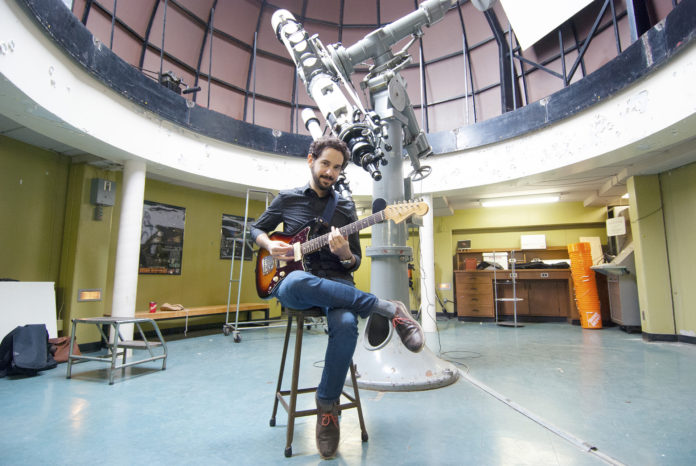What does outer space sound like?
To astrophysicist, musician and educator Matt Russo, the orbits of planetary systems and the intense radio signals from distant pulsars are musical compositions just waiting to be heard.
This is how SYSTEM Sounds, a science-art outreach project co-created by Russo, was born. Inspired by the rhythms and harmonies of the Universe, Russo realized that the typically-visual field of astronomy lent itself well to musical interpretations, and that presenting astronomical data in the form of songs opened the field up to an entirely new audience.
“It was really kind of a lightning-bolt moment when they discovered TRAPPIST-1,” Russo explains. “It was pretty clear to me in the beginning that this was a musical solar system.”
TRAPPIST-1 made headlines in early 2017 when it was announced that the system was host to the largest batch of Earth-sized exoplanets discovered around a single star to date. What stuck out to Russo, however, were the special patterns in the planets’ orbits (known as “orbital resonances”) that resembled musical rhythms and harmonies.
In Russo’s musical composition inspired by the TRAPPIST-1 system, each planetary transit is represented by a note on the piano, and the beat of a drum signals the moment when one planet overtakes another.
The piece is both inspired and informed by the data behind it — and the result is a whole new way to experience the Universe.
The sounds of science
While astronomy is typically thought of as a visual science, Russo explains that listening to the data can provide researchers with insights they wouldn’t have had access to by eye.
“Your ear is a different sense organ, and it’s optimized for different things. [It’s] very good at hearing temporal variations, changing in timings, and you can really feel that in the music in a way that you wouldn’t necessarily notice in a visual form.”
For Russo, however, the main motivation behind SYSTEM Sounds has been connecting people with astronomy. His work has led to the creation of a sound-based planetarium show at the University of Toronto titled Our Musical Universe, as well as the One Sky installation at Toronto’s Nuit Blanche art festival that saw thousands of visitors listening to the music of variable stars over the course of a single night.
It has also given the blind and visually-impaired communities a unique opportunity to experience the cosmos.
“They really feel like this is a window for them into something that would be inaccessible otherwise.”
A course on the music of the cosmos
Now, Russo is teaching a course at Seneca College on the deep similarities shared by music and astronomy, and encouraging students to create astronomical compositions of their own.
The course, called Music and Astronomy: Exploring Rhythm and Harmony in the Cosmos, has attracted students across a wide range of disciplines, and was inspired by Russo’s desire to share his passions for music and astronomy with a wider audience.
“I wanted to find a way to let anybody make music from space, so I thought of a course where I could teach the basics of astronomy, the basics of music, and the basics of computer coding — and teach them all together, so they could reinforce each other.”
The most exciting part for Russo so far has been hearing the different ways in which the Universe is interpreted by his students — often very different from the way he himself creates music from outer space.
For their term project, Russo’s students will be creating their own compositions inspired by the musicality of the Universe. He hopes to hear a variety of music by the end of the course, inspired by the diverse musical influences of his students.
The songs will be performed at the Canadian National Institute for the Blind Community Hub in Toronto on Dec. 18.








































